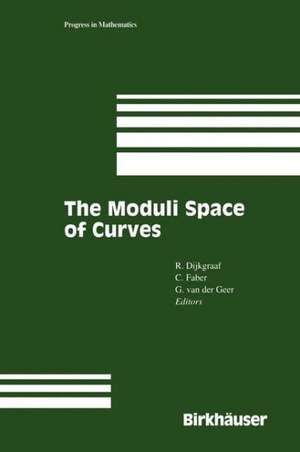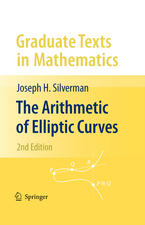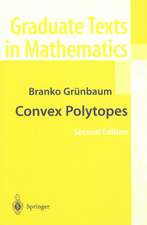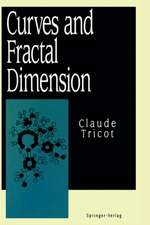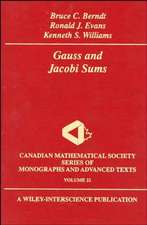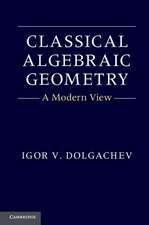The Moduli Space of Curves: Progress in Mathematics, cartea 129
Editat de Robert H. Dijkgraaf, Carel Faber, Gerard B.M. van der Geeren Limba Engleză Hardback – 18 oct 1995
| Toate formatele și edițiile | Preț | Express |
|---|---|---|
| Paperback (1) | 1393.58 lei 6-8 săpt. | |
| Birkhäuser Boston – 19 noi 2011 | 1393.58 lei 6-8 săpt. | |
| Hardback (1) | 1340.03 lei 6-8 săpt. | |
| Birkhäuser Boston – 18 oct 1995 | 1340.03 lei 6-8 săpt. |
Din seria Progress in Mathematics
- 24%
 Preț: 687.36 lei
Preț: 687.36 lei - 24%
 Preț: 740.80 lei
Preț: 740.80 lei - 9%
 Preț: 763.33 lei
Preț: 763.33 lei -
 Preț: 308.20 lei
Preț: 308.20 lei - 20%
 Preț: 695.88 lei
Preț: 695.88 lei -
 Preț: 362.51 lei
Preț: 362.51 lei -
 Preț: 308.13 lei
Preț: 308.13 lei - 18%
 Preț: 749.27 lei
Preț: 749.27 lei - 9%
 Preț: 766.42 lei
Preț: 766.42 lei - 20%
 Preț: 631.09 lei
Preț: 631.09 lei - 24%
 Preț: 638.88 lei
Preț: 638.88 lei - 15%
 Preț: 580.82 lei
Preț: 580.82 lei -
 Preț: 392.37 lei
Preț: 392.37 lei -
 Preț: 395.09 lei
Preț: 395.09 lei -
 Preț: 390.25 lei
Preț: 390.25 lei -
 Preț: 376.80 lei
Preț: 376.80 lei - 18%
 Preț: 729.53 lei
Preț: 729.53 lei - 15%
 Preț: 652.49 lei
Preț: 652.49 lei - 15%
 Preț: 649.22 lei
Preț: 649.22 lei - 18%
 Preț: 897.95 lei
Preț: 897.95 lei -
 Preț: 385.08 lei
Preț: 385.08 lei -
 Preț: 391.02 lei
Preț: 391.02 lei -
 Preț: 378.54 lei
Preț: 378.54 lei - 15%
 Preț: 531.59 lei
Preț: 531.59 lei - 15%
 Preț: 642.83 lei
Preț: 642.83 lei - 15%
 Preț: 650.69 lei
Preț: 650.69 lei -
 Preț: 381.21 lei
Preț: 381.21 lei -
 Preț: 392.37 lei
Preț: 392.37 lei -
 Preț: 398.53 lei
Preț: 398.53 lei - 15%
 Preț: 699.28 lei
Preț: 699.28 lei -
 Preț: 416.92 lei
Preț: 416.92 lei -
 Preț: 385.84 lei
Preț: 385.84 lei - 18%
 Preț: 902.65 lei
Preț: 902.65 lei - 18%
 Preț: 802.28 lei
Preț: 802.28 lei - 15%
 Preț: 640.06 lei
Preț: 640.06 lei - 18%
 Preț: 1129.83 lei
Preț: 1129.83 lei
Preț: 1340.03 lei
Preț vechi: 1634.18 lei
-18% Nou
Puncte Express: 2010
Preț estimativ în valută:
256.50€ • 278.71$ • 215.60£
256.50€ • 278.71$ • 215.60£
Carte tipărită la comandă
Livrare economică 21 aprilie-05 mai
Preluare comenzi: 021 569.72.76
Specificații
ISBN-13: 9780817637842
ISBN-10: 0817637842
Pagini: 563
Ilustrații: XII, 563 p.
Dimensiuni: 155 x 235 x 32 mm
Greutate: 0.98 kg
Ediția:1995
Editura: Birkhäuser Boston
Colecția Birkhäuser
Seria Progress in Mathematics
Locul publicării:Boston, MA, United States
ISBN-10: 0817637842
Pagini: 563
Ilustrații: XII, 563 p.
Dimensiuni: 155 x 235 x 32 mm
Greutate: 0.98 kg
Ediția:1995
Editura: Birkhäuser Boston
Colecția Birkhäuser
Seria Progress in Mathematics
Locul publicării:Boston, MA, United States
Public țintă
ResearchCuprins
Distribution of rational points and Kodaira dimension of fiber products.- How many rational points can a curve have?.- Quantum cohomology of rational surfaces.- Quantum intersection rings.- Mirror symmetry and elliptic curves.- A generalized Jacobi theta function and quasimodular forms.- Boundary behaviour of Hurwitz schemes.- Operads and moduli spaces of genus 0 Riemann surfaces.- Resolution of diagonals and moduli spaces.- The Chow ring of the moduli space of curves of genus 5.- The cohomology of algebras over moduli spaces.- Enumeration of rational curves via torus actions.- Cellular decompositions of compactified moduli spaces of pointed curves.- Generating functions in algebraic geometry and sums over trees.- Holomorphicity and non-holomorphicity in N = 2 supersymmetric field theories.- An arithmetic problem in surface geometry.- An orbifold partition of$$\bar M_g^n$$.- Moduli of curves with non-abelian level structure.- Q-structure of conformal field theory with gauge symmetries.- On the cohomology of moduli spaces of rank two vector bundles over curves.
Textul de pe ultima copertă
The moduli space Mg of curves of fixed genus g – that is, the algebraic variety that parametrizes all curves of genus g – is one of the most intriguing objects of study in algebraic geometry these days. Its appeal results not only from its beautiful mathematical structure but also from recent developments in theoretical physics, in particular in conformal field theory.
Leading experts in the field explore in this volume both the structure of the moduli space of curves and its relationship with physics through quantum cohomology. Altogether, this is a lively volume that testifies to the ferment in the field and gives an excellent view of the state of the art for both mathematicians and theoretical physicists. It is a persuasive example of the famous Wignes comment, and its converse, on "the unreasonable effectiveness of mathematics in the natural science."
Witteen’s conjecture in 1990 describing the intersection behavior of tautological classes in the cohomology of Mg arose directly from string theory. Shortly thereafter a stunning proof was provided by Kontsevich who, in this volume, describes his solution to the problem of counting rational curves on certain algebraic varieties and includes numerous suggestions for further development. The same problem is given an elegant treatment in a paper by Manin. There follows a number of contributions to the geometry, cohomology, and arithmetic of the moduli spaces of curves. In addition, several contributors address quantum cohomology and conformal field theory.
Leading experts in the field explore in this volume both the structure of the moduli space of curves and its relationship with physics through quantum cohomology. Altogether, this is a lively volume that testifies to the ferment in the field and gives an excellent view of the state of the art for both mathematicians and theoretical physicists. It is a persuasive example of the famous Wignes comment, and its converse, on "the unreasonable effectiveness of mathematics in the natural science."
Witteen’s conjecture in 1990 describing the intersection behavior of tautological classes in the cohomology of Mg arose directly from string theory. Shortly thereafter a stunning proof was provided by Kontsevich who, in this volume, describes his solution to the problem of counting rational curves on certain algebraic varieties and includes numerous suggestions for further development. The same problem is given an elegant treatment in a paper by Manin. There follows a number of contributions to the geometry, cohomology, and arithmetic of the moduli spaces of curves. In addition, several contributors address quantum cohomology and conformal field theory.
